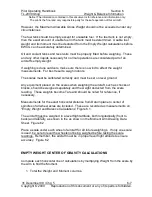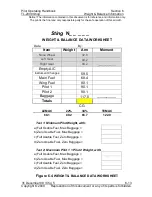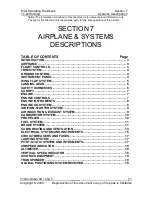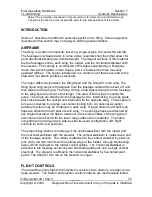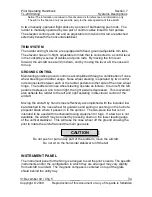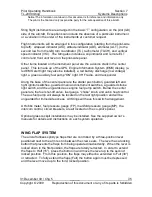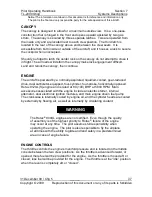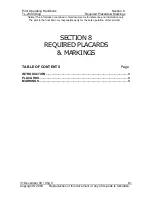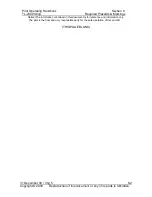
Pilot Operating Handbook
Section 7
TL-2000
Sting
Systems Descriptions
Notice! The information contained in this document is for reference and information only.
The pilot is the final and only responsible party for the safe operation of this aircraft.
31 December 09 / Chg 5
______
7-7
Copyright © 2009 Reproduction of this document or any of its parts is forbidden.
CANOPY
The canopy is designed to allow for a maximum outside view. It is a one-piece
construction that is hinged in the front and opens upward assisted by two gas
struts. The canopy is secured by three separate latches. Two are operated from
the inside only and are located next to each crew position. The third latch is
located in the rear of the canopy above and between the crew seats. It is
accessible from both inside or outside of the aircraft, and it houses a lock to secure
the cockpit when unoccupied.
Should you forget to latch the center lock on the canopy do not attempt to close it
in flight. The air loads will deform the canopy make lock engagement difficult.
Land and relock the canopy, then continue.
ENGINE
The aircraft is powered by a normally-aspirated, liquid/air-cooled, gear-reduced
drive, dual carburetor-equipped, four-cylinder, four-stroke, horizontally-opposed
Rotax 912UL(S) engine and is rated at 80 (100) BHP at 5800 RPM. Main
accessories associated with the engine include an electric starter, internal
alternator, dual electronic ignition modules, and main engine driven fuel pump.
The crankcase is internally cooled by engine oil, and the cylinder heads are cooled
by externally by flowing air, as well as internally by circulating coolant.
The Rotax
®
900UL engines are not certified. Even though the quality
of assembly is of the highest priority to Rotax
®
, failure of the engine
may occur at any time. The pilot assumes full responsibility when
operating the engine. The pilot is also responsible to fly the airplane
at all times with the ability to glide and land safely in a predetermined
area in case of engine failure.
ENGINE CONTROLS
The throttle controls the engine’s manifold pressure and is located on the middle
console between the two crew positions. As the throttle is advanced forward, or
opened, more fuel will be provided for the engine. As the throttle is moved aft, or
closed, less fuel will be provided for the engine. The throttle is at the “idle” position
when the lever is completely aft, or “closed”.
WARNING

